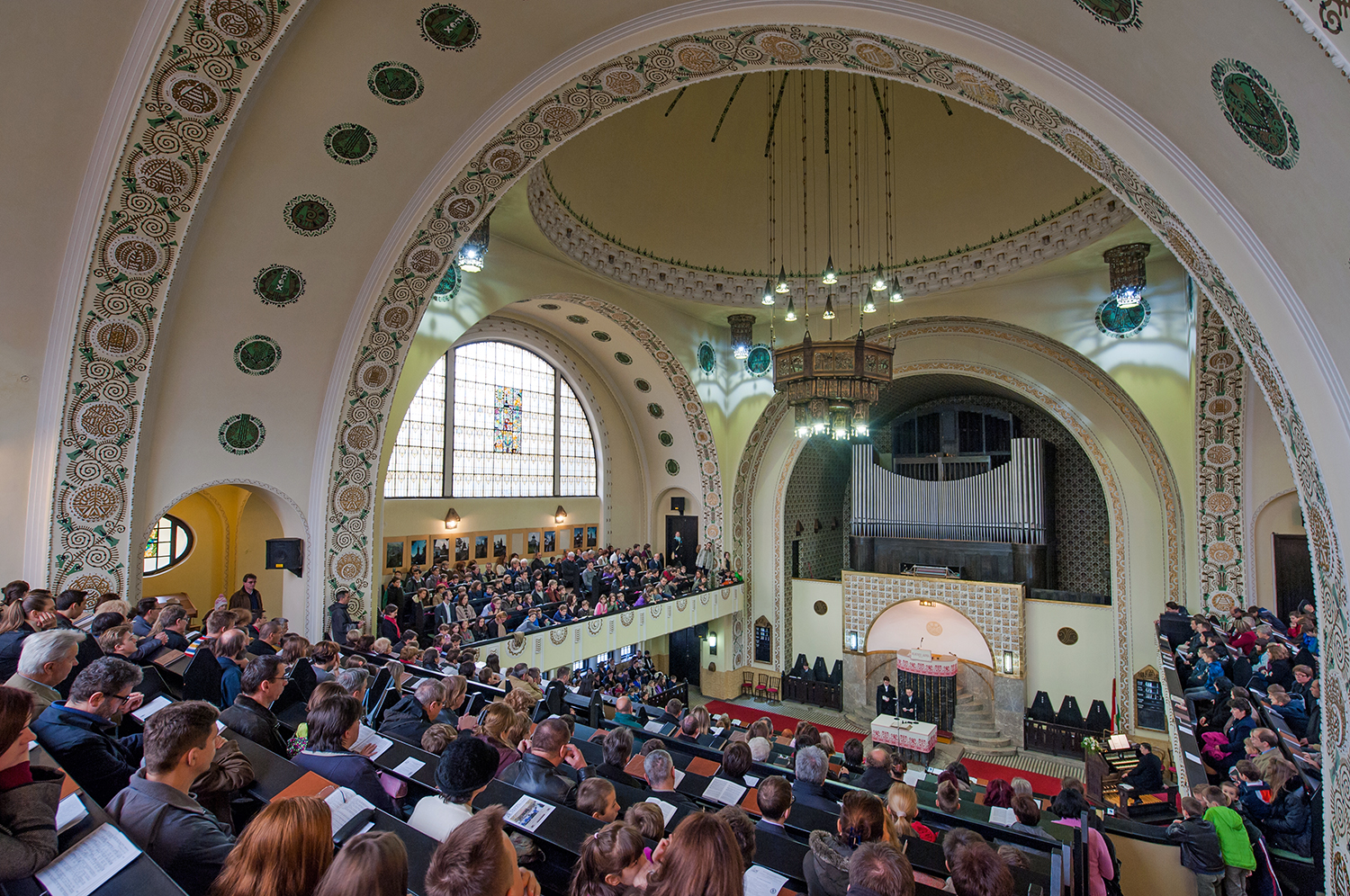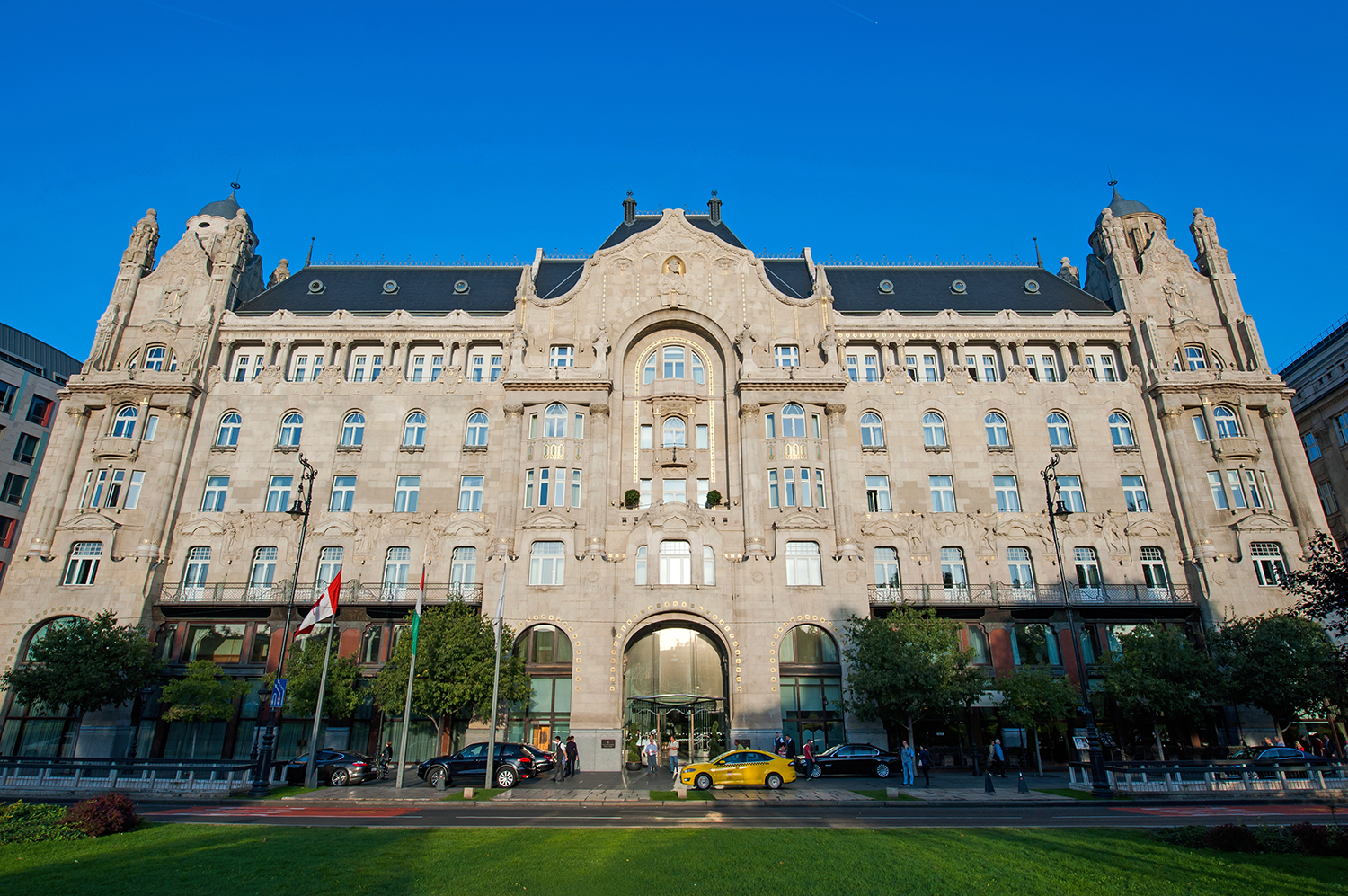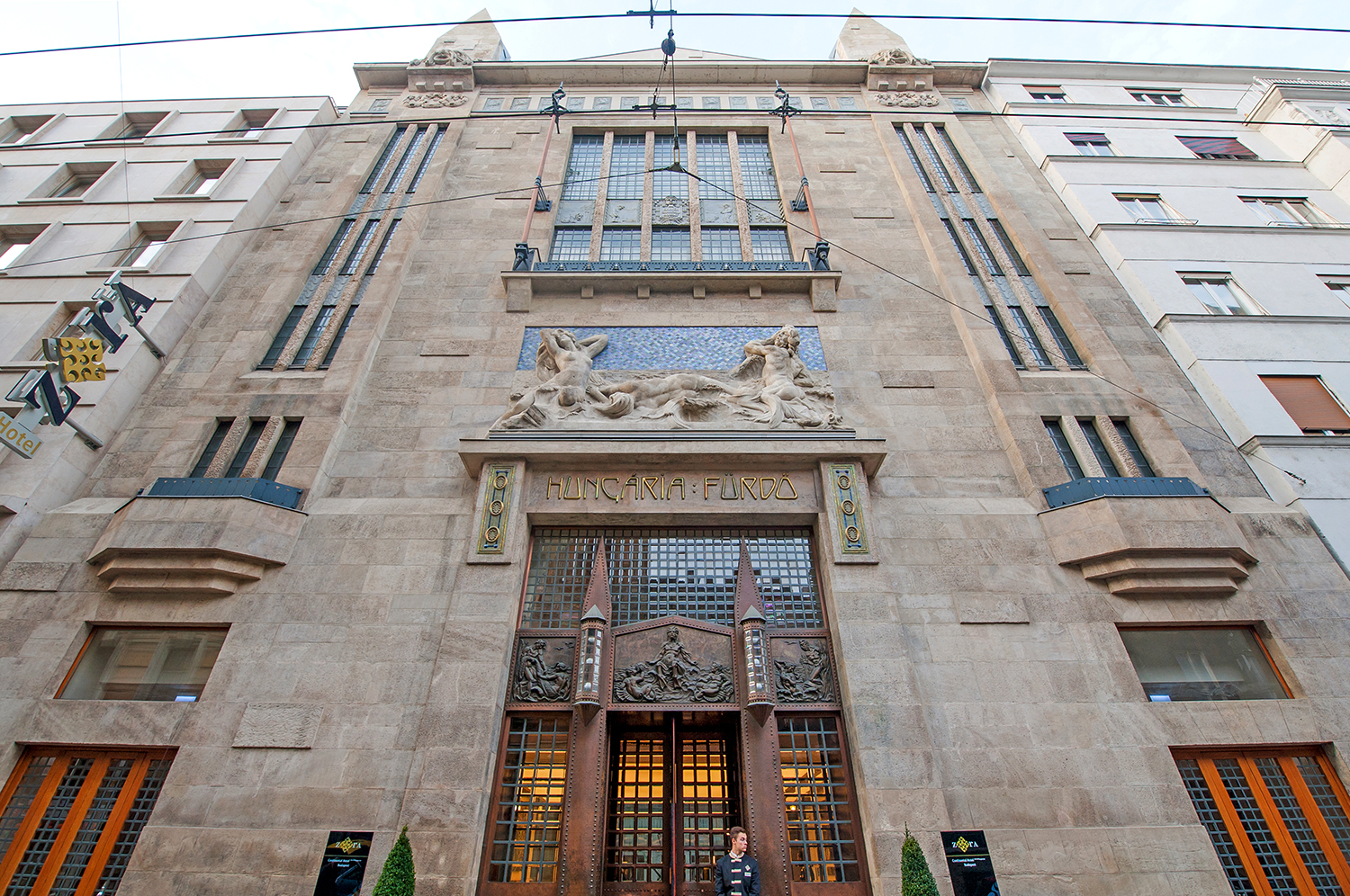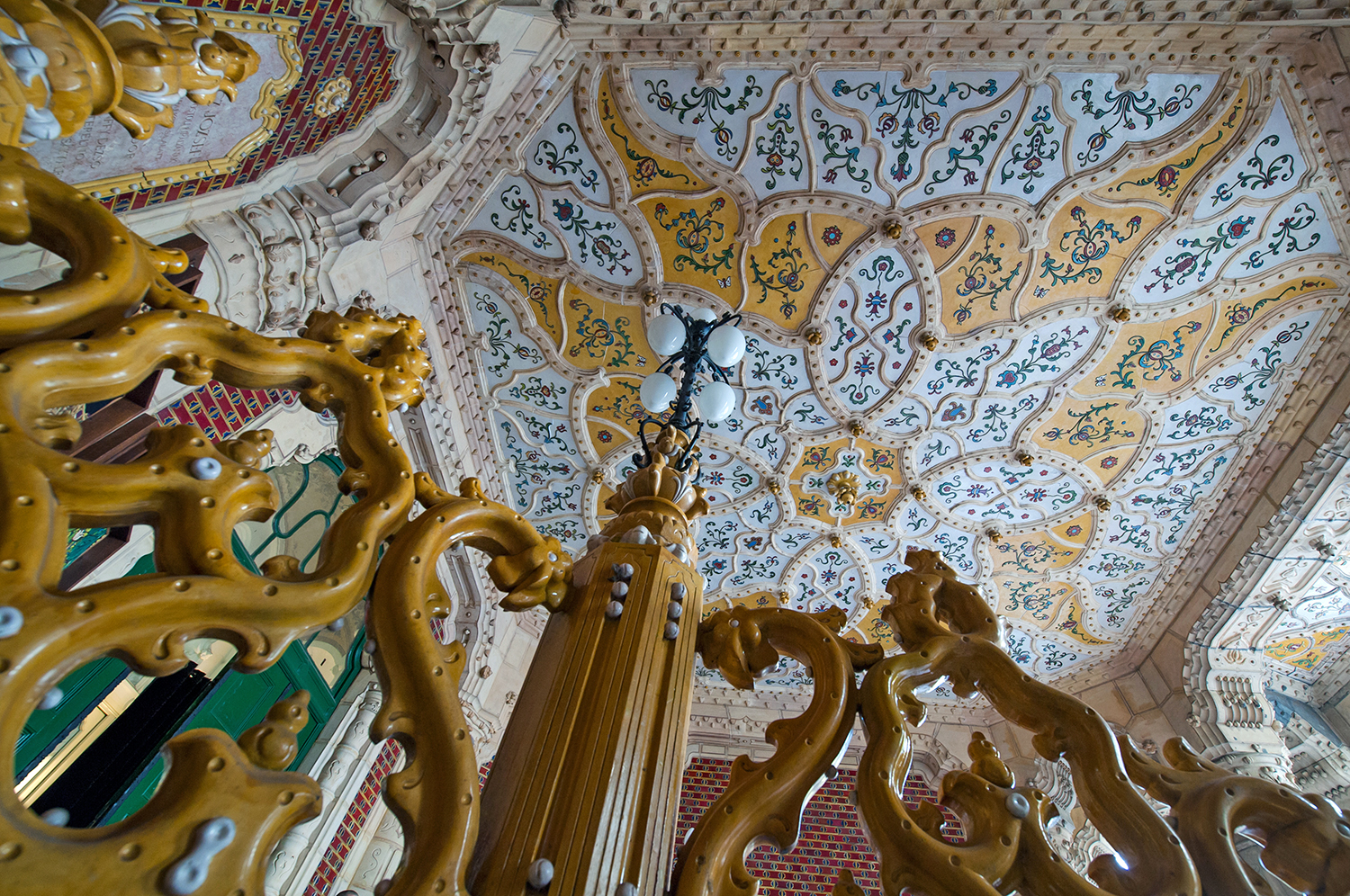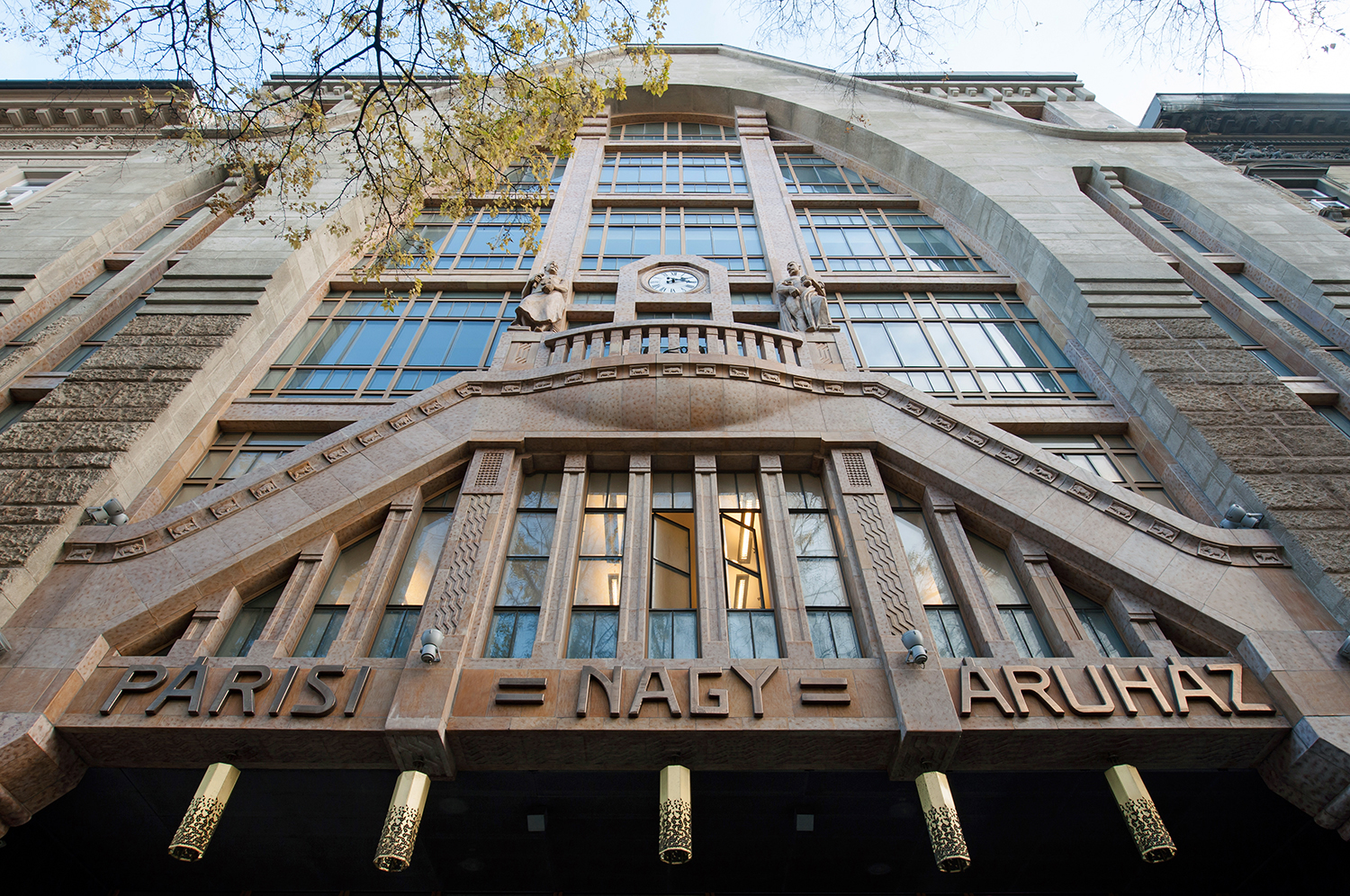
The church – built in 1913 based on the designs of architect Aladár Árkay – displays characteristics of Lechner's Hungarian Art Nouveau, along with elements of the German, Scandinavian, and American variations of the style. The main entrance is trimmed with ceramic tiles of geometric patterns. The artistically executed stained glass windows were done by Miksa Róth, while the interior design and the furnishings do credit to the architect. The church can seat 1000 people for services.
Open during services.

The Hungarian Royal Geological Institute was founded in 1869. Its current building on Stefánia Road was built between 1896 and 1899, according to the designs of the master architect of Hungarian Art Nouveau, Ödön Lechner, who died exactly 100 years ago. There are numerous folk art motifs in the ornamentation; the globe on the roof is supported by four, characteristically Hungarian figures. Ödön Lechner and Vilmos Zsolnay were on friendly terms, so it comes as no surprise that the ceramics for the façade and the roof were supplied by the factory in Pécs that created the famous Hungarian Zsolnay ceramics. Although upon his visit in 1900, Franz Joseph I was not satisfied with the exterior of the building, the interior managed to appeal even to the ruler's more conservative taste. The building (together with another of Lechner's masterpieces) is expected to be added to the UNESCO World Heritage List soon.
Open Thursdays 10am - 4pm.
Address: 1143 Budapest, 14 Stefánia Road

The healing thermal waters of the Gellért Hill have been known since the Middle Ages. The infamous Sáros Bath had stood here but was brought down during the construction of the Franz Joseph Bridge and a call for tenders to replace it was announced in the first decade of the 20th century. The late Art Nouveau spa and hotel designed by Artúr Sebestyén, Ármin Hegedűs and Izidor Sterk opened in 1918, while its famous wave pool was completed in 1927. The elegant hotel has accommodated numerous noted personalities in the nearly 100 years since. Zsolnay ceramics and stained glass windows play a central role in the ornamentation. The fountain head in front of the building was added in 2003.
The public can access parts of the building.
The portrait on the façade of the building in front of the Chain Bridge is that of Sir Thomas Gresham, a 16th century British tradesman and founder of the London Royal Exchange. The building (originally) of luxury flats was commissioned by the eponymous insurance company to provide a steady income, since insurance companies of the time were not allowed to participate in stock exchange deals or other risky investments. The architects Zsigmond Quittner and József Vágó were given a free hand, and they decided to assign the most prestigious artists of the period to the ornamentation of the building. The above mentioned bust was made by Ede Telcs, the ornaments of the façade praise Géza Maróti, while the wrought iron gate decorated with peacock motifs is the handiwork of Gyula Jungfer. Inside, the T-shaped ground floor passage under the glass dome is lined with shops and is open to the public. Its tiles were produced by the Zsolnay factory, while the Venetian mosaics and the stained glass windows are by Miksa Róth. The building was famous for its numerous technological innovations, like the central heating and the built-in vacuum cleaner. Before the Second World War, it was home to the popular Gresham-Venezia Café. The Communist leadership expropriated the building in 1948 and divided what were spacious apartments into smaller flats. The offices were populated by state companies and the protected building went practically to ruin within a few decades. It was carefully renovated and re-opened in the early 2000s and now functions as a luxury hotel.
The ground floor passage and the lobby are open to the public.
The first bath to stand here was built in 1827. The Hungária Bath and Continental Hotel designed by Emil Ágoston was built between1908 and 1909. The building housing a swimming pool, a steam bath, a theatre with auditorium, and flats with en suite bathrooms soon became the centre of social life. The swimming pool was transformed into a cinema in the 1920s, but the building was so dilapidated by 1963 that it had to be closed. The fate of Hungária seemed to be sealed: with the exception of the façade, the entire building was dismantled. In 2010, however, a renovation saved it from oblivion, and brought back the Zsolnay tiles, the bronze adornments of the revolving door and the luxurious foyer. Some parts are open to the public.

The Museum of Applied Arts was founded in 1872, and the building was finished in 1896, in time for Millennial celebrations. Even Franz Joseph I visited the building, but he expressed his dislike of the architectural style. The masterpiece designed by Ödön Lechner and Gyula Pártos houses a museum and a school. The ornamentation displays the influence of Hungarian folk art as well as Asian and Persian elements. The largest and most central hall of the museum reveals an intimate connection to Indian art. The façade and the roof are decorated with Zsolnay tiles. The good news is, the reconstruction designs for the somewhat dilapidated museum are ready, and related works might soon begin. As part of this, the steeple that was removed for safety reasons will be replaced.
Open every day with the exception of Mondays.

The building designed by Marcell Komor and Dezső Jakab on Rákóczi Road was built in 1910. There are Lechner-style motifs as well as 'Palace Hotel' written in harmonising typography among the ceramic adornments on the façade. The top-floor wooden veranda suggests the influence of Transylvanian architecture. The most impressive part of the interior is the restaurant, clad with ceramic adornments. Following a complete renovation, the building re-opened in 2002. Today, it is home to the Hotel Novotel Budapest Centrum.
Address: Budapest VIII, 43 Rákóczi Road Some parts are open to the public.

This venue of unparalleled quality was built for the Parisiana Club between 1908 and 1909. It was designed by one of the greatest talents of period architecture, Béla Lajta. The façade is dominated by the greyish marble covering, crowned by a parapet ornamented with cherubs and bronze reliefs. All this was senselessly destroyed in the 1960s, then reconstructed between 1987 and 1990. The building is now home to the Új Theatre ('New Theatre').
Address: Budapest VI,35 Paulay Ede Street The foyer is open to the public during box office opening hours.
After his shop on Rákóczi Road burned down in 1903, tradesman Sámuel Goldberger decided to build a French style department store that was significantly larger than his previous shop. The building, designed by Zsigmond Sziklay, was constructed on the prestigious Andrássy Avenue between 1909 and 1911. The back wing of the building also known as Divatcsarnok (Fashion Hall) incorporated Gusztáv Petschacher's Terézvárosi Casino, so the façade facing Andrássy Avenue is Art Nouveau, while the Paulay Ede side of the building displays neo-Rennaissance elements. The back part houses the famous Lotz Hall (today a café), that was named after the artist of its ceiling frescos, Károly Lotz. The innovative solutions like reinforced concrete and the glass-roof atrium made it a state-of-the-art building at the time. In contrast to the neo-Rennaissance façades of the rest of Andrássy Avenue, the department store is ornamented with Zsolnay ceramics. There is a tiny promenade on the roof, used as an ice skating rink in winter. The building today functions as a book store.
Open to the public.


